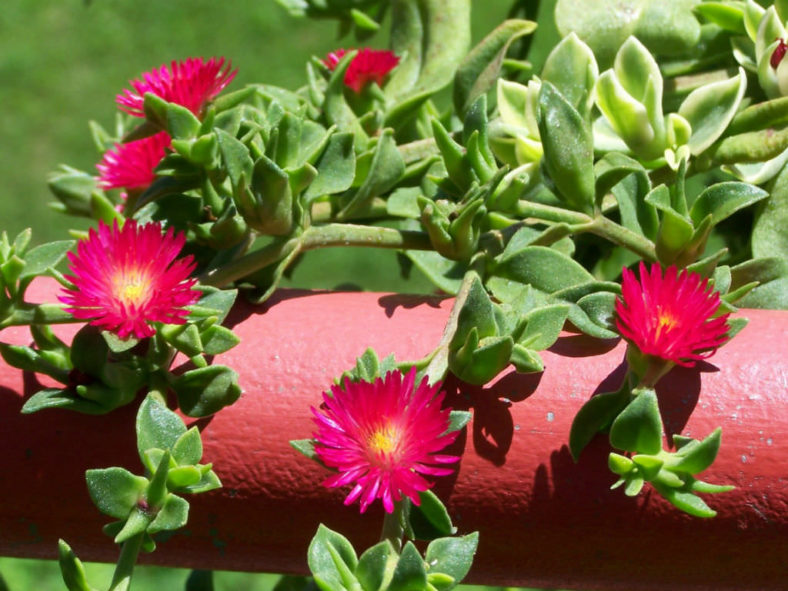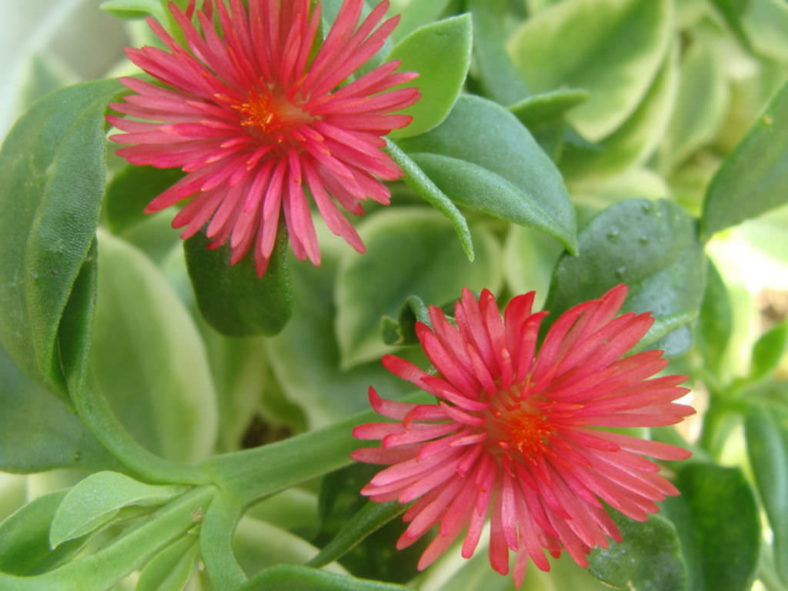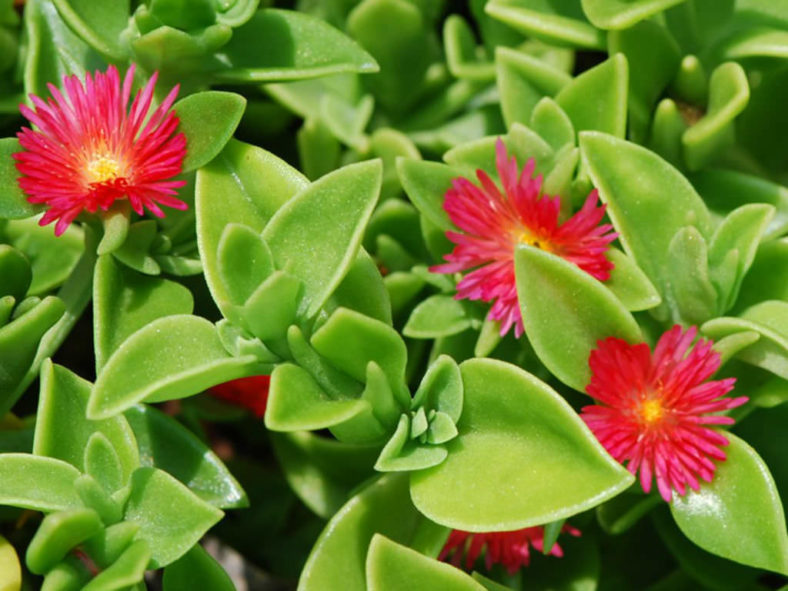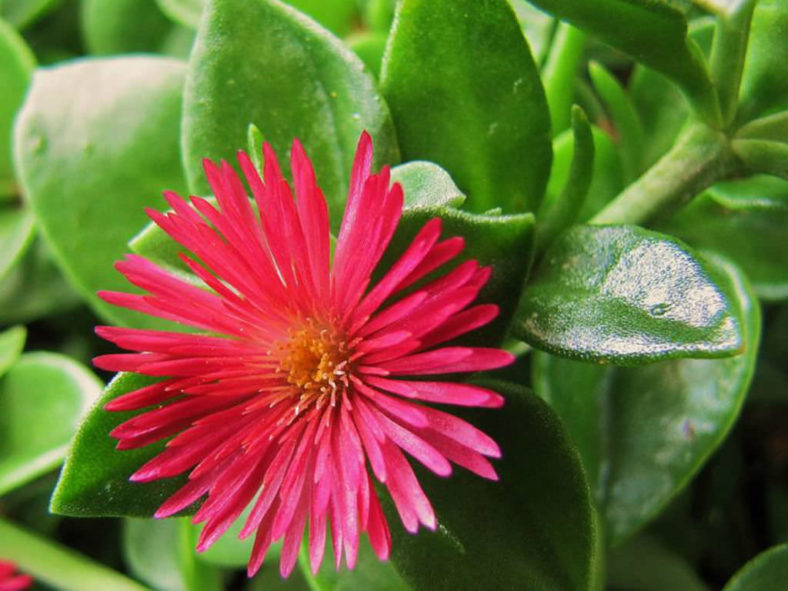Scientific Name
Mesembryanthemum 'Red Apple'
Common Name(s)
Baby Sun Rose
Synonym(s)
Aptenia 'Red Apple'
Scientific Classification
Family: Aizoaceae
Subfamily: Mesembryanthemoideae
Genus: Mesembryanthemum
Origin
Mesembryanthemum 'Red Apple' is a hybrid that results from a cross between Mesembryanthemum cordifolium and Mesembryanthemum haeckelianum.
Description
Mesembryanthemum 'Red Apple', formerly known as Aptenia 'Red Apple', is a beautiful mat-forming succulent with fleshy leaves on branching stems growing from a woody base. It is often confused with one of its parents, Mesembryanthemum cordifolium, but has more vigorous growth, and its leaves are brighter green and less heart-shaped.
In addition, its flowers tend to have a reddish color, unlike its parent, which has bright pink to purplish flowers.

Hardiness
USDA hardiness zones 8a to 10b: from 10 °F (−12.2 °C) to 40 °F (+4.4 °C).
How to Grow and Care
Water Aptenia only when the soil is completely dry and then provide enough to drench the soil to a depth of about 6 inches (15 cm). To check for dryness, poke your finger into the soil. Never water if the soil feels damp or cool, as Aptenia, like all succulents, is prone to rot in soggy, waterlogged soil. Water Aptenia lightly during the winter if the leaves begin to look shriveled. Provide only enough water to moisten the soil as the plant deteriorates quickly in cool, damp soil.
Withhold fertilizer because it often results in a weak, floppy plant. Trim the plant as needed throughout the growing season, using pruners or garden shears to keep the plant tidy. Pot the plant and bring it indoors for the winter when nighttime temperatures drop below 50 °F (10 °C).
Learn more at How to Grow and Care for Aptenia.
Links
- Back to genus Mesembryanthemum
- Succupedia: Browse succulents by Scientific Name, Common Name, Genus, Family, USDA Hardiness Zone, Origin, or cacti by Genus
Photo Gallery
Click on a photo to see a larger version.


